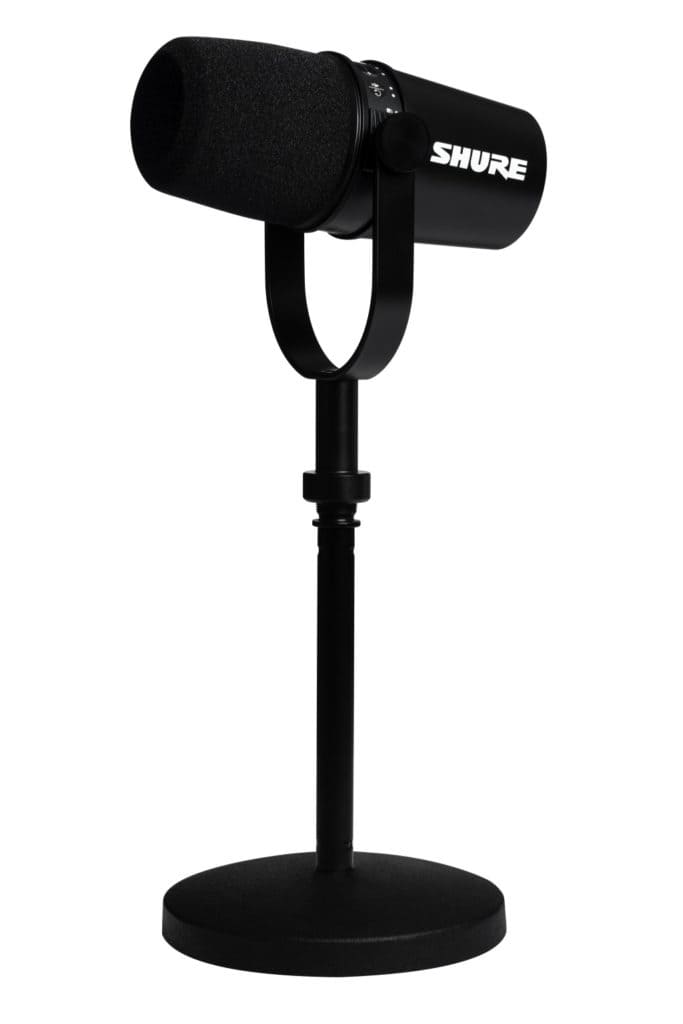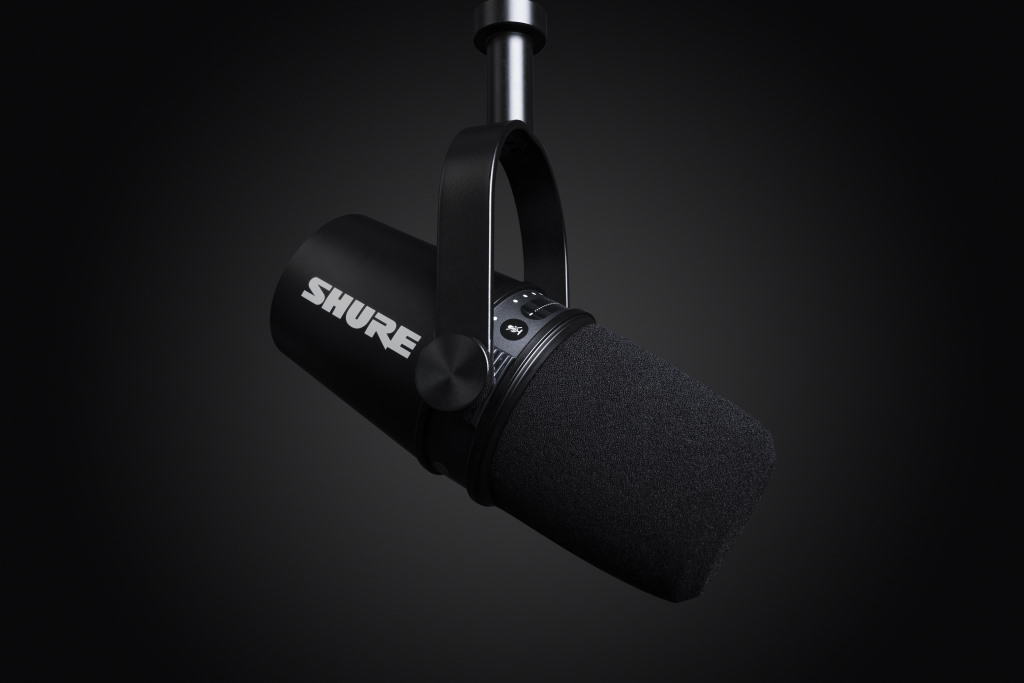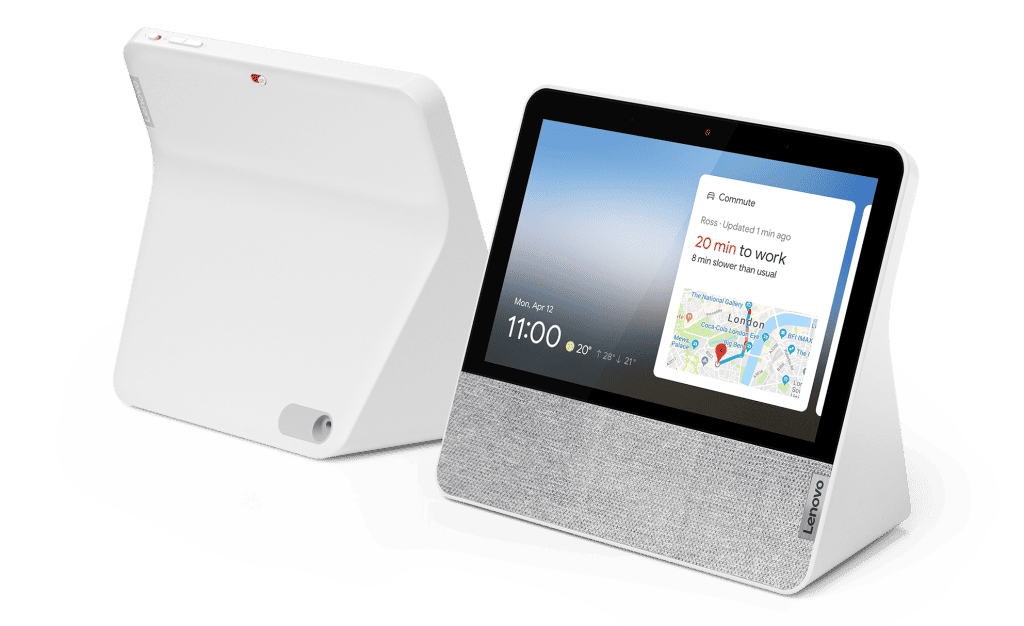Shure MV7 Podcasting Microphone REVIEW
Summary
Shure MV7 Podcasting Microphone REVIEW
Every man and his dog are podcasting in 2020 but often the sound quality is crap. PAT PILCHER discovers a tool to fix that, and it’s a doozy.
$579

 The Shure MV7 has big shoes to fill, given the following that the earlier SM7B mic picked up within the pro audio crowd. Like the SM7B, the MV7 sports a compact design, but this time it’s aimed at podcasters. This makes a lot of good sense. So many video podcasts are let down by shitty audio, despite them featuring slick video editing, titles, and opening graphics.
The Shure MV7 has big shoes to fill, given the following that the earlier SM7B mic picked up within the pro audio crowd. Like the SM7B, the MV7 sports a compact design, but this time it’s aimed at podcasters. This makes a lot of good sense. So many video podcasts are let down by shitty audio, despite them featuring slick video editing, titles, and opening graphics.
Because so few podcasters can afford XLR-connected gear, the MV7 can be used with USB or XLR outputs, or both can be used simultaneously. This means that while audio professionals can hook the MV7 into XLR inputs on a preamp, podcasters lacking the money for pro-level gear can hook it to a PC.
Would you like to support our mission to bring intelligence, insight and great writing to entertainment journalism? Help to pay for the coffee that keeps our brains working and fingers typing just for you. Witchdoctor, entertainment for grownups. Your one-off (or monthly) $5 or $10 donation will support Witchdoctor.co.nz. and help us keep producing quality content. It’s really easy to donate, just click the ‘Become a supporter’ button below.
Design-wise the MV7 looks like it means business. Crafted out of alloy, it’s built like a brick you-know-what house. Given the bumps and knocks most audio gear used in the field endures, this can only be a good thing.
Driving the MV7 isn’t hard either thanks to a small touch panel located on its housing. With it, users can control gain levels (which are indicated with LEDs) and mute the mic. More premium features such as adjustable frequency responses are accessible using the ShurePlus app.
While the touch panel is a nifty feature, it can be fiddly to drive, especially if you are holding the mic. Sliding a finger along the touch panel can also add unwanted noise into the audio.

On the plus side, professionals will also like that the MV7 allows you to use both the XLR and USB outputs simultaneously. By doing this, you get a low-resolution audio file via USB, and a high-resolution file via the XLR output.
For quick editing and/or transcription purposes, it can be indispensable, giving you a reference file as well as a file you can quickly edit. Shure also earns big brownie points by including both a USB-A to micro USB cable as well as a USB-C to micro USB cable too. That said, you’ll probably need to invest in a decent microphone stand/compact boom arm.
One of the first things to do with the mic is to download the ShurePlus app, with which you get fine-grained control and a more comprehensive set of recording modes. It also includes online access to the MV7’s manual and firmware updates.
If fiddling with manual settings gives you hives, no stress! The MV7 has an auto mode which can do all the work. One auto tool that’s bound to appeal to podcasters is the mic position setting, which will tweak settings based on your location relative to the MV7. If you move out of frame, audio levels are automatically tweaked so your audio won’t fall off a cliff.
You can also tweak the MV7’s frequency response (there are three presets tilted Dark, Natural, and Bright). If you use headphone monitors connected to the MV7’s headphone output, there’s also a handy monitor mix slider which will tweak the level of your voice through headphones.

In manual mode, settings include a mute toggle, a gain slider, EQ, as well as a limiter and compressor. The EQ settings consist of four different equaliser profiles. The limiter is likely to come in handy to reduce audio clipping.
The compressor slider also consists of four settings. These are off, light, medium, and heavy. The compressor reduces the difference between the loudest and quietest sounds which can be handy for spoken content.
The various presets can be saved in the ShurePlus app, so you can page through commonly used settings. The touch panel can also be locked, so settings don’t get messed with, and the MV7 remembers settings, so they stay the same when used with different hardware.
I found that even with my limited expertise it produced a clear recording. Thanks to excellent auto settings and a plethora of manual settings, it handled nearly anything I threw at it with relative ease. All told, the Shure MV7 is a great microphone that will be a welcome addition to any podcaster’s kit.
https://www.shure.com/en-ASIA/products/microphones/mv7















